|
|
Tourism
 Mauritius
basks in splendid isolation in the bosom of the warmest ocean of all, the
Indian Ocean, just inside the tropic of Capricorn, bounded by Africa, India
and Australia. Mauritius
basks in splendid isolation in the bosom of the warmest ocean of all, the
Indian Ocean, just inside the tropic of Capricorn, bounded by Africa, India
and Australia.
 Within
its 720 square miles there are more than 1,000 miles of good roads lined
with bougainvillea and flame trees, violet moonscaped mountains, deep
craters, wild waterfalls, rainbows and shooting stars, villages hidden
in lush coastal vegetation, plateau towns with charming old colonial houses,
flowers and trees growing out of the red earth in a riot of colour and
everywhere the green and golden mantle of sugar cane. Within
its 720 square miles there are more than 1,000 miles of good roads lined
with bougainvillea and flame trees, violet moonscaped mountains, deep
craters, wild waterfalls, rainbows and shooting stars, villages hidden
in lush coastal vegetation, plateau towns with charming old colonial houses,
flowers and trees growing out of the red earth in a riot of colour and
everywhere the green and golden mantle of sugar cane.
Why
is it so hard to find on the world map...?
Travel
Mauritius is
a major tourist destination. The national carrier, Air Mauritius and several
international airlines link the country with most of the major European,
African and Asian cities as well as Australia and other islands of the Indian
Ocean.
What to
see
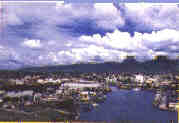 Port
Louis :Capital and main part of Mauritius, Port Louis was founded by
the French governor Mahe de Labourdonnais in 1736. The harbour lies sheltered
in a semi-circle of mountains. Port
Louis :Capital and main part of Mauritius, Port Louis was founded by
the French governor Mahe de Labourdonnais in 1736. The harbour lies sheltered
in a semi-circle of mountains.
Champ
de Mars, originally laid out by the French for military parades, is
now a racecourse. 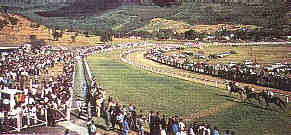
 Mahebourg
:As one on the main fishing centres, it lies in the bay of Grand Port
and has a Naval Museum, housed in the French colonial mansion where
in 1810 the English and French commanders, both wounded in battle, were
brought to be given medical aid. Mahebourg
:As one on the main fishing centres, it lies in the bay of Grand Port
and has a Naval Museum, housed in the French colonial mansion where
in 1810 the English and French commanders, both wounded in battle, were
brought to be given medical aid.
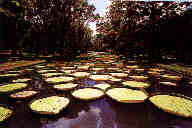 Pamplemousses
Gardens : The gardens are known to naturalists throughout the world
for their large collection of indigenous and exotic plants, including
the giant Victoria Regia water lilies and many species of palm trees.
Of particular interest is the Talipot palm, which is said to flower once
every sixty years and dies thereafter. Pamplemousses
Gardens : The gardens are known to naturalists throughout the world
for their large collection of indigenous and exotic plants, including
the giant Victoria Regia water lilies and many species of palm trees.
Of particular interest is the Talipot palm, which is said to flower once
every sixty years and dies thereafter.
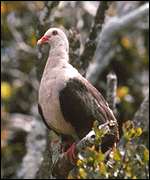 Two
and a half percent of the island is dedicated to natural reserves. Bird
specialist Dr Carl Jones has pioneered new techniques which has brought
back the Mauritius Kestrel from just one breeding pair to 600 birds, the
Pink Pigeon from nine to 300 birds and the Echo Parakeet from nine to
about 100 birds. Two
and a half percent of the island is dedicated to natural reserves. Bird
specialist Dr Carl Jones has pioneered new techniques which has brought
back the Mauritius Kestrel from just one breeding pair to 600 birds, the
Pink Pigeon from nine to 300 birds and the Echo Parakeet from nine to
about 100 birds. 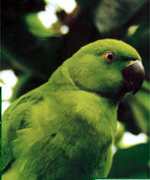
|

